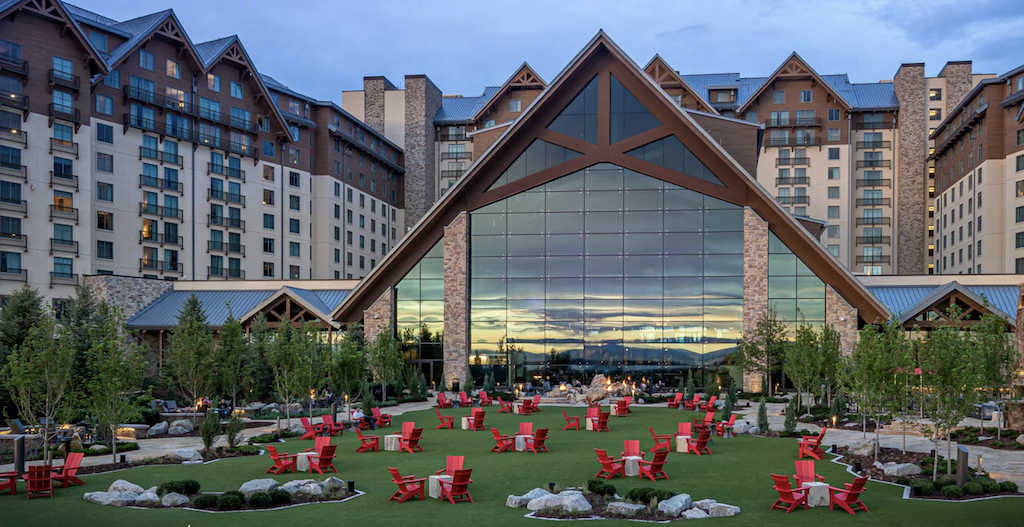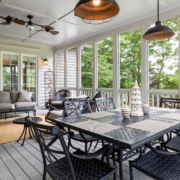With the July edition of Casual Market Atlanta wrapped up, we’ve been speaking with industry members about how the show turned out compared to expectations. For many, it exceeded expectations, but other exhibitors felt the retailers’ hesitation to place orders.
As the market split into two this year, it was predicted that retailers would choose one market to attend — but the July market had heavier traffic than some expected.
“I was very pleased and we had good attendance,” says Brian Echols, senior vice president of sales for LLoyd Flanders. “One of the things that I was excited about is that people seemed open to buy, and they were taking steps towards actually putting orders together. We understand that people still don’t write a lot of business at market, but we’ve seen some orders already start to come in from market.”
He adds that, based on the amount of scans they got, the company knows that their showroom was robustly attended, and he was pleased that there was a bigger designer showing than at previous markets.
Inventory was less of an issue for retailers than it has been in quite some time, Echols notes, and they were on the hunt for products to refresh their floors.
“Something I’ve heard from multiple retailers is that there was a sea of sameness across a lot of the retailers,” Echols adds. “And even when you went from retail to retailer, there was a lot of redundancy. That seems to have been fleshed out and retailers are ready to refresh their show floors.
“Everybody is always cautious in an election year, and I think that’s still overriding some of this,” he continues. “But there was definitely a palpable feeling of people expecting things to get better this upcoming season.”
However, it’s interesting to see how — despite the small size of our industry — exhibitors all experienced market differently.
I would say attendance was pretty lukewarm, but the large, multi-store accounts who came out are the ones who keep the factories going,” says Jim Sica, senior vice president at Foremost Group. “I can’t say that they were in a buying frenzy; they weren’t depressed either. They were all recognizing the need to make changes, and it was a different kind of a mood that seemed more sophisticated to some degree — they’ve analyzed their businesses and they’re ready to go forward.”
He also says he was impressed with how the market itself was starting to show the changes that he’s been feeling. “I think we’re all getting refreshed, and the industry really needs it,” he adds.
John Hunt, CEO of Americas Backyard & Outdoor Living, says he and those we spoke with were hoping that they would see more traffic than they did.
“We saw most of the people we needed to see, and I wasn’t terribly disappointed,” he says. No one’s crazy about writing lots of orders yet. We aren’t back to pre-Covid traffic levels yet, but I am hopeful because we saw an increase in traffic over the last two markets that I’ve been to in Atlanta.”
So how will the September show go?
Hunt says that those who shop and place orders in September will be on a very tight time frame with overseas orders — something that’s exacerbated by increased container costs.
Many, including Sica, believe September will be a time for specialty retailers to make their rounds, and he doesn’t think retailers who came in July will be back. He echoes Hunt, saying that September is simply too late for container companies.
“Even July is too late for some companies, and they’d like to see product in April,” he says. “And even though we make most of our business off of multi-store retailers, we recognize that we need to embrace all the business that is out there. So we’re working on programs for September that will make it worth everyone’s time.”
Echols says that this September will certainly be better than last September now that the market is officially in July and September,
“But a lot of people that said that they were coming in September and probably not coming to July ended up being there in July,” he says. “It leaves me a little bit unsure as to what it will be like. Our Canadian reps both told us that a lot of their customers are coming, but we saw a fair amount of people from California and from the Northeast in July.”
He says he’s sensing a difference in the market though, which Hunt also says he sees, which is that retailers are a little more cautious and even skittish about buying because of the recent inventory overload many of them faced.
“Even though July prior to when they might place the orders, they don’t want to overcommit too early,” he says. “It felt like a lot of people were doing more planning for what they’re going to do, rather than in September coming and looking to fill their slots then. A lot of people have changed what they’re doing since Covid, and they’re looking to plan their floor and then go back to clear out their floors to make room. The other advantage that happens is they have a better chance to sell at a higher margin because they’re not on post-Labor Day clearance prices — and I think that’s healthier for everybody.”
With the September market nearly two months away, there’s still time for a lot to change. However, it seems many retailers are more than aware of that and have planned ahead to make sure they are ready for whatever can happen. Overall, retailers seem cautiously optimistic about the 2025 selling year, and that’s exemplified by the turnout at the July market.








